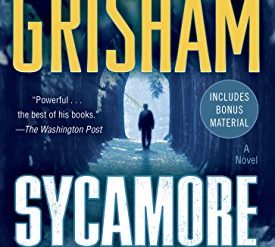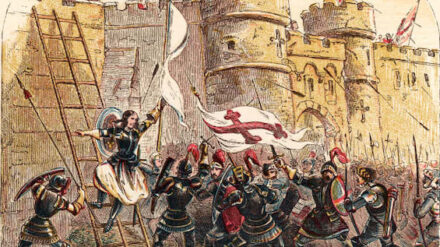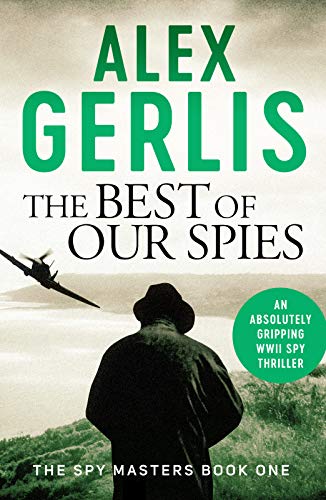
Estimated reading time: 26 minutes
You won’t find the best-known war novels here, since I imagine you’re already familiar with them. I’m referring to Stephen Crane’s The Red Badge of Courage, Erich Maria Remarque’s All Quiet on the Western Front, Norman Mailer’s The Naked and the Dead, Joseph Heller’s Catch-22, Richard Hooker’s MASH, and Kurt Vonnegut’s Slaughterhouse 5. I read them all decades ago and haven’t chosen to re-read them. Instead, I’ve listed below only novels that, for the most part, are less familiar to the reading public. I’ve read them in recent years and found them to be outstanding.
The titles below are listed in alphabetical order by the authors’ last names. Each is followed by my rating and the headline from my blog, with a link to the review embedded within it. Enjoy!
This post was updated on March 25, 2024.
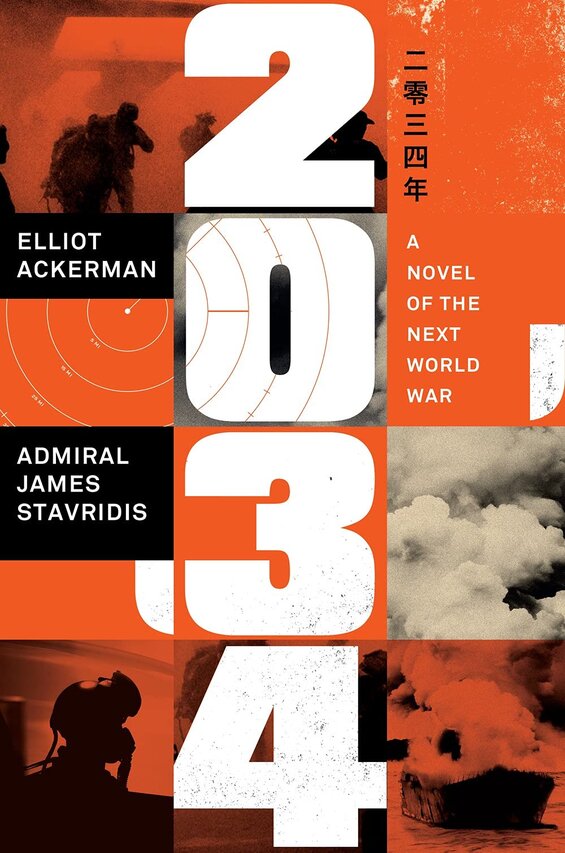
2034: A Novel of the Next World War by Elliot Ackerman and Admiral James Stavridis (2021) 320 pages ★★★★★ – The Third World War breaks out in 2034, but not how you think
A squadron of three US destroyers sails on a “freedom of navigation” mission in the disputed waters of the South China Sea. Nearby a smaller vessel is gushing smoke, and Captain Sara Hunt, the squadron’s commodore, orders her warships to veer off course to investigate. They find a small craft packed with electronic surveillance equipment, which they seize. And this ill-considered act in March 2034 triggers a succession of shocking events that unfold over the next four months. Not the rapid-fire, tit-for-tat exchange of strategic nuclear weapons conjured up in the most common fantasy of a Third World War. Just a slow-motion disaster with its own tragic and far-reaching consequences. Thus begins 2034: A Novel of the Next World War. It’s the most frightening book I’ve read in many years. Read more. . .

March by Geraldine Brooks (2005) 320 pages ★★★★★ – The untold tale of the absent father in “Little Women”
Skim the list of past Pulitzer and National Book Award-winners, and you won’t find many that seem familiar years after their publication. But March, which won the Pulitzer Prize for Fiction in 2006, seems destined to be read far into the future. Like Brooks’ other two works of historical fiction, Year of Wonders and People of the Book, both international bestsellers, March is rooted in often-cultivated ground but grows into a story that is fresh, original, and deeply moving. You might not imagine that anyone could write a novel in the 21st Century about the American Civil War and create anything memorable, but Geraldine Brooks has done it. Read more . . .
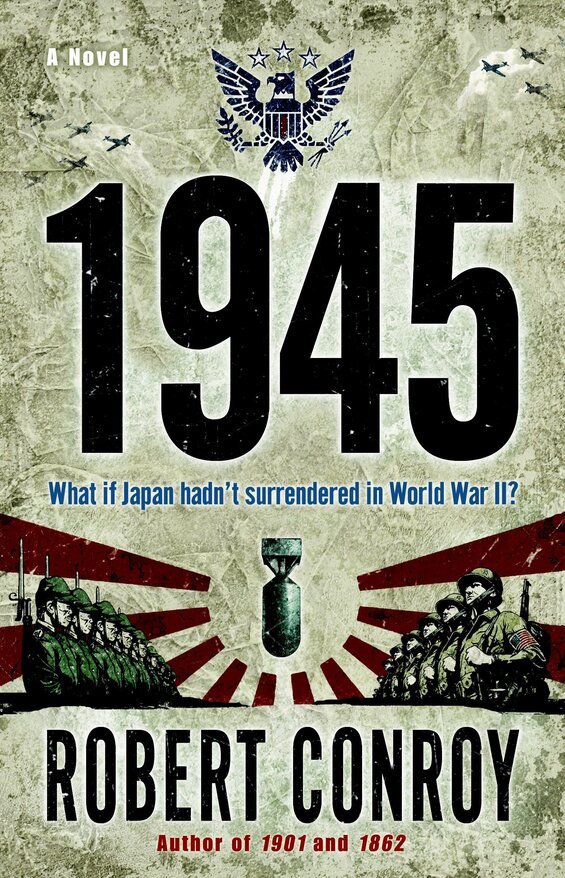
1945 by Robert Conroy (2007) 450 pages ★★★★★ – What if Japan hadn’t surrendered?
One of the most hotly debated topics in recent American history was Harry Truman’s decision to drop atomic bombs on Hiroshima and Nagasaki. Although many within his administration resisted the action, Truman defended it on the grounds that the bomb would force Japan’s surrender. The likelihood, his military advisers asserted, is that he would save as many as a million US lives that would be lost in an otherwise necessary invasion of the Japanese home islands. Moral qualms aside, Truman proved to have been right. But what if he hadn’t? What if a military coup inside the Japanese leadership had pushed aside Emperor Hirohito and led the country’s already shattered army and navy in a doomed effort to continue the war? What if Japan hadn’t surrendered? That’s the premise of the late Robert Conroy‘s superb alternate WWII history, 1945. Read more . . .
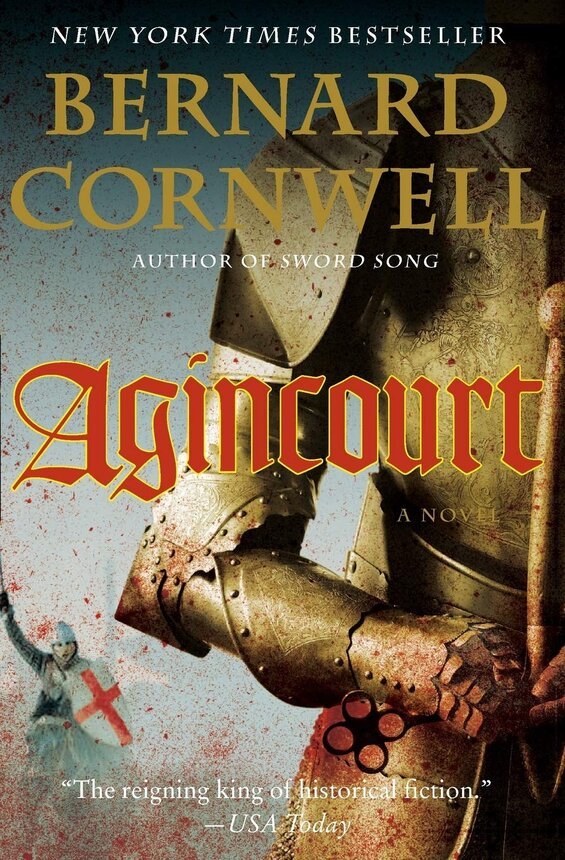
Agincourt by Bernard Cornwell (2008) 467 pages ★★★★★ – When war was personal and face-to-face
When military historians tick off the greatest battles in world history, the clash between the English and the French at Agincourt in 1415 is invariably on the list. Unlike some other battles, such as Stalingrad and Midway of recent memory, the victory at Agincourt didn’t represent a historic turning-point. Although the English under Henry V gained temporary advantage, the event brought no longer-term gains. It was one of many bloody battles in the Hundred Years’ War (1337–1453). Instead, Agincourt is remembered more for the lopsided victory it brought to England. Henry’s 6,000 exhausted and half-starved fighters, many of them violently ill with dysentery, challenged—and decisively defeated—a fresh French army of 30,000. And in his eponymous novel of the battle, popular historical novelist Bernard Cornwell conjures up all the blood, guts, and glory of the day. Read more . . .
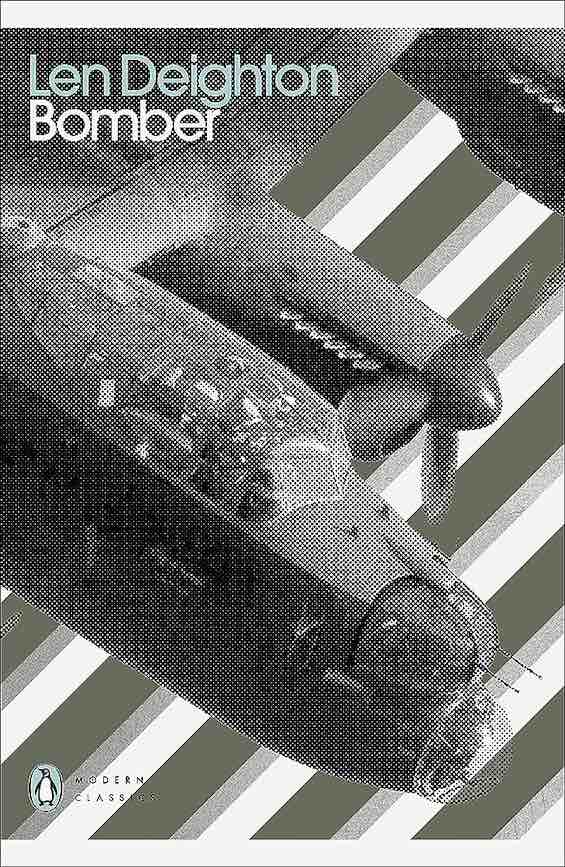
Bomber by Len Deighton (1970) 498 pages ★★★★★ – An intensive look a single RAF Bomber Command mission in World War II
Malcolm Gladwell is right. In his introduction to the 2023 reissue of Bomber, Len Deighton’s portrayal of a single RAF Bomber Command mission in World War II, he refers to the book as “one of the greatest British anti-war novels ever written.” I might go further. Surely, Bomber ranks with classics such as The Red Badge of Courage, All Quiet on the Western Front, and Catch-22. But truly understanding its impact requires reading it in the context in the Allies’ area bombing (or strategic bombing) campaigns over Germany and Japan. Read more . . .
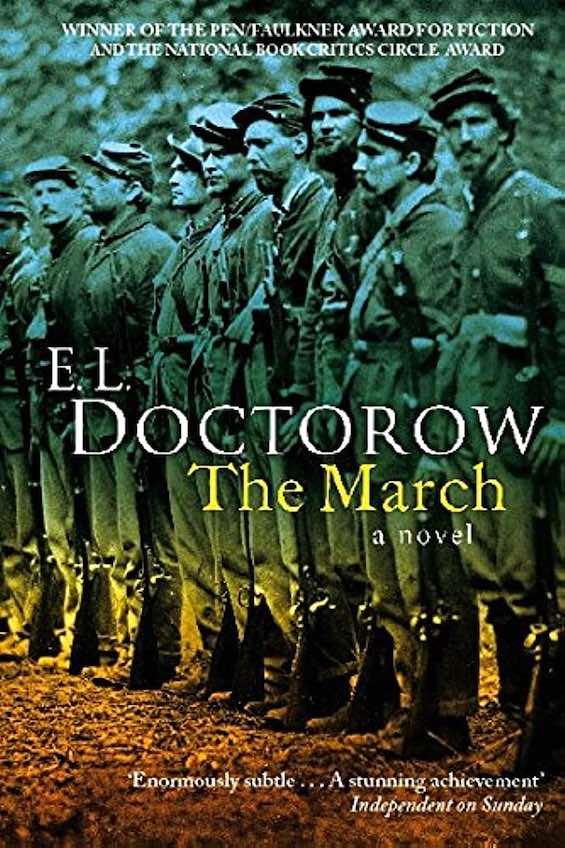
The March by E. L. Doctorow (2005) 384 pages ★★★★★ – A moving novel about Sherman’s March to the Sea
We remember Sherman’s March largely because of the dramatic scene portraying the burning of Atlanta in the blockbuster 1939 film Gone With the Wind. It was the top-grossing film of all time when adjusted for inflation, and it’s still popular online. But that horrific scene when the second city of the Confederacy burned to the ground took place on November 15, 1864. It was only a single episode in William Tecumseh Sherman’s campaign to cripple the ability of the eleven rebel states to wage war.
The March began six months before Atlanta burned, and it climaxed with the surrender of Savannah on December 21, 1864. And E. L. Doctorow’s classic novel, The March, takes up the story only after his army had passed through Atlanta. In soaring prose, Doctorow chronicles the taking of Savannah and the progress of Sherman’s army into the Carolinas in the opening months of 1865. This is historical fiction of the highest order. Read more . . .
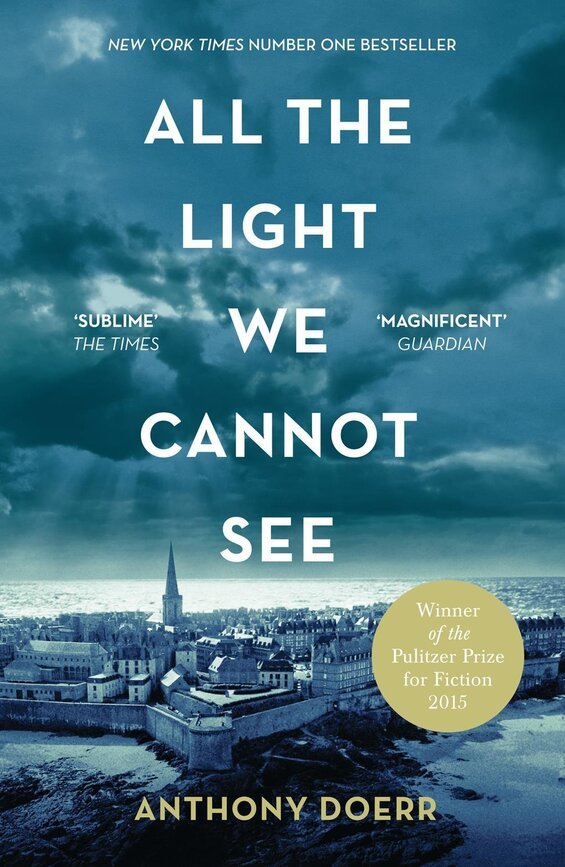
All the Light We Cannot See by Anthony Doerr (2014) 545 pages ★★★★★ – This superb Pulitzer Prize-winner deserves the award it won
Literary awards can be a poor guide to enjoyable reading. Britain’s Man Booker Award-winners, for example, strike me as a mixed bag at best. Generally, though, a book that wins a Pulitzer and is a finalist for a National Book Award deserves more than a casual look. That’s certainly the case with All the Light We Cannot See, an historical novel long at or near the top of the national best-seller lists, winner of the 2015 Pulitzer Prize for Fiction.
Here is a wildly original boy-meets-girl story. Two teenagers are caught up in the frenzy and the mortal dangers of World War II: a German boy who is extraordinarily clever with all things electronic, and a blind French girl who reads Jules Verne. Author Anthony Doerr explores the trajectory of their lives in parallel, moving them inexorably toward a fateful intersection in the book’s surprising climax. Like millions of other Europeans, Marie-Laure LeBlanc and Werner Pfennig are victims of the war, but their stories are fresh: these are uniquely drawn individuals, each masterfully portrayed by a writer at the top of his form. Read more . . .
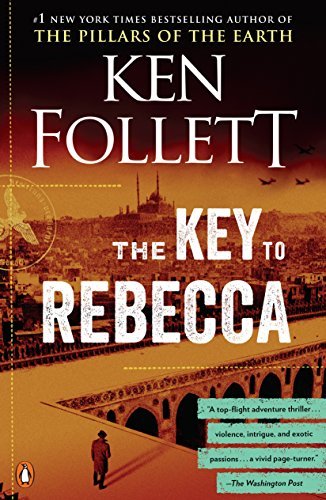
The Key to Rebecca by Ken Follett (1980) 400 pages ★★★★★ – One of the best World War II spy stories
Espionage fiction offers us a rich array of smoothly written and suspenseful novels set during World War II or in the Cold War era that followed. The classic work of Graham Greene (1904-91), Eric Ambler (1909-98), John le Carré (1931-2020), and Ken Follett (1949-), although written decades ago, holds up to the best produced by such contemporary masters of the genre as Joseph Kanon (1946-), Alan Furst (1941-), David Ignatius (1950-), and Paul Vidich. Two of Ken Follett’s novels offer special rewards for anyone with a taste for World War II spy stories. The better-known of those books is The Eye of the Needle, published in 1978. But in some ways The Key to Rebecca, which appeared two years later, may provide an even richer reading experience. Read more . . .
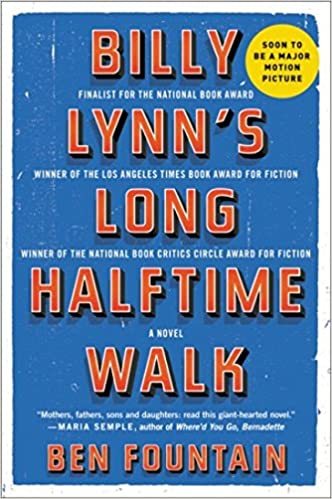
Billy Lynn’s Long Halftime Walk by Ben Fountain (2012) 325 pages ★★★★★ – A war hero and the Dallas Cowboy Cheerleaders in a funny anti-war novel
Billy Lynn’s Long Halftime Walk is a funny book, beautifully written, and I suspect it conveys about as well as any humorless treatment a sense of the war in Iraq from the perspective of the Americans who fought it face to face with insurgents. It was no surprise to me when I learned after finishing the book that it had won the 2013 National Book Critics Circle Award and was a finalist for the 2012 National Book Award for Fiction. So I’m far from alone in loving the novel.
Billy Lynn is a certified, true-blue, red-blooded American hero, one of eight surviving soldiers in a ten-man squad that engaged a large band of Iraqi insurgents in a deadly firefight. One of the two lifers in the squad, a sergeant Billy idolized, was shot, then grabbed and dragged away by two insurgents. Witnessing this terrible scene, Billy instantly, unthinkingly, leapt into the line of fire, shot and killed the sergeant’s two captors while dodging a barrage of bullets, and then proceeded to kill many of the other enemy fighters with one hand while he tended to the gravely wounded man with his other, finally cradling him in his lap as he died. Read more . . .
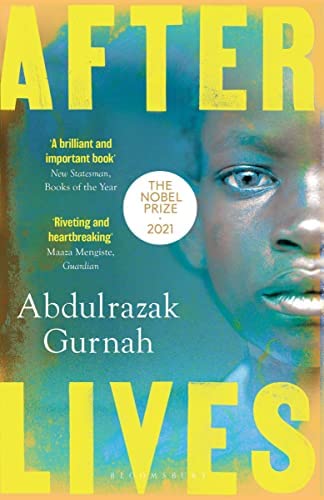
After Lives by Abdulrazak Gurnah (2022) 316 pages ★★★★☆ – A Nobel Prizewinner probes his country’s history
For three decades, the nation now known as Tanzania was a German colony. In 1891, the country and adjoining territory (including Rwanda and Burundi) became Deutsch-Ostafrika. During World War I, German officers led locally recruited soldiers in sometimes savage fighting with the British and Belgians on what was known as the African Front. But when Germany lost World War I, the British, Belgians, and Portuguese took over. The lion’s share was first a mandate under the League of Nations and then a British colony known as Tanganyika. The nation gained its independence in 1961, soon renamed Tanzania. Its history is a tale of colonization and war. And it forms the backdrop to After Lives, a riveting new African historical novel by the Nobel Prize-winning Tanzanian novelist, Abdularazak Gurnah. Read more . . .
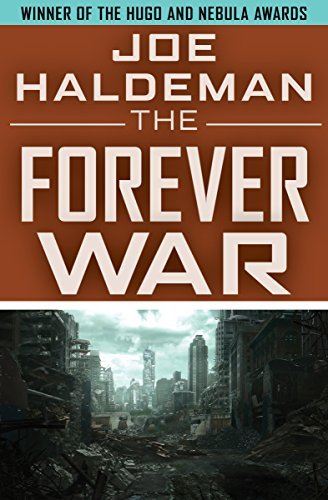
The Forever War (Forever War Trilogy #1) by Joe Haldeman (1974) 292 pages ★★★★★ – This classic science fiction war novel won both the Hugo and Nebula Awards
Joe Haldeman’s classic science fiction war novel, The Forever War, appears on most lists of the all-time most popular stories in the field. The book won both the Hugo and Nebula Awards for Best Novel. When it was published in 1974, the Vietnam War was winding down. Haldeman had fought in the war and was badly wounded there. At the time, a dozen publishers rejected the novel because, as Haldeman reveals in an Author’s Note at the front of the Kindle edition of the novel, “‘nobody wants to read a science fiction novel about Vietnam.'”
Today, the parallel between the Vietnam War and Haldeman’s story is difficult to see. The Forever War could be no war in history, or every war. “It’s about Vietnam because that’s the war the author was in,” Haldeman writes. “But it’s mainly about war, about soldiers, and about the reasons we think we need them.” Read more . . .
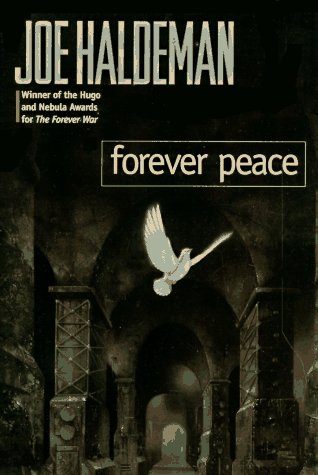
Forever Peace (Forever War Trilogy #2) by Joe Haldeman (1997) 360 pages ★★★★☆ – A prescient look at the military of the future
Visions of future warfare abound with horror stories about robot soldiers. Ranks of Star Wars stormtroopers march through our eyes as we think the unthinkable of war conducted by proxy, with human operators located at great distance from the front lines like the men and women who pilot Reaper and Predator drones from a secure location in the Nevada desert. Joe Haldeman, author of The Forever War, the most storied war novel in science fiction history, offers a somewhat different take in Forever Peace, a sequel that’s not a sequel to his multiple award-winning novel. In his tale of automated mid-twenty-first century war, robots do go on the front lines, but their human operators are bodily and mentally integrated through brain-computer interface technology. Read more . . .
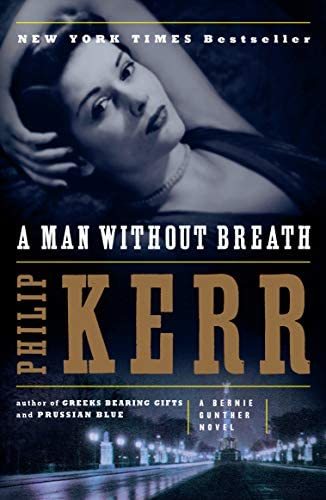
A Man Without Breath (Bernie Gunther #9) by Philip Kerr (2013) 477 pages ★★★★★ – Mass murder in the Katyn Forest
In the spring of 1940, Josef Stalin’s secret police, the NKVD, systematically murdered some 22,000 Poles. Among the victims were half the members of the Polish officer corps, police officers, government representatives, royalty, and leading members of Poland’s civilian population. More than 4,000 of them were buried in the Katyn Forest, a wooded area near the city of Smolensk, located near the Belarus border west of Moscow. Though far more Poles were murdered elsewhere under the same directive from the Kremlin, the atrocity came to be identified as the Katyn Massacre. Philip Kerr’s novel, A Man Without Breath, is based on the international investigation first carried out there in 1943.
Though it might seem improbable, the Wehrmacht operated a War Crimes Bureau from 1939 to 1945. Ostensibly, the purpose of this organization was to uncover war crimes committed not just by the Allies but by Nazi Germany as well. Of course, it’s no surprise that records of the bureau’s inquiries into mass murder by the Wehrmacht (or, much more often, the SS) did not survive the war. Those that brought to light atrocities by the Allies did survive—but most were classified and hidden away by the US Government until 1975, when they were belatedly passed along to West German officials. Read more . . .
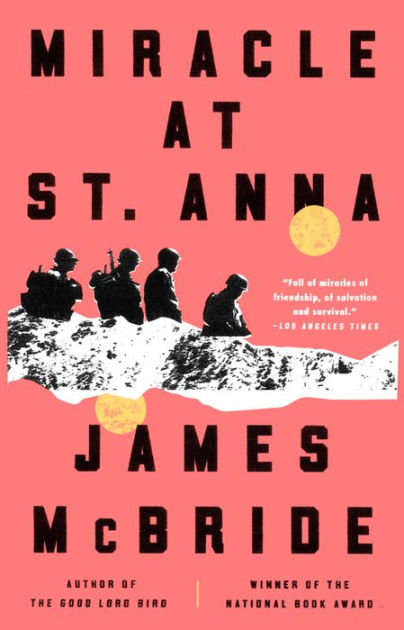
Miracle at St. Anna by James McBride (2001) 324 pages ★★★★★—Black soldiers on the front line in Tuscany in World War II
“This book is a work of fiction inspired by real events and real people.” So writes James McBride in an author’s note that precedes the text. He continues: “It draws upon the individual and collective experiences of black soldiers who served in the Serchio Valley and Apuane Alps of Italy during World War II.” They were among the storied “Buffalo Soldiers” of the US Army’s segregated 92nd Infantry Division. The division garnered thousands of honors, including two Medals of Honor, 208 Silver Stars, and 1,166 Bronze Stars, yet many of the white officers who commanded the unit circulated false reports of the troops’ poor performance. In Miracle at St. Anna, an engrossing account of the division in action in Italy late in 1944, James McBride brings that reality to light.
McBride’s story recounts the experiences of the four surviving soldiers of a squad in action in the Serchio Valley in December 1944. Privates Sam Train, Bishop Cummings, and Hector Negron, and Second Lieutenant Aubrey Stamps barely escape with their lives when the racist white captain directing artillery fire from division HQ against the Germans angrily refuses to support their company as they face murderous enemy fire. Instead, he targets the Germans facing a white detachment. The company is, in the language of the times, cut to pieces. Caught alone on the wrong side of the Serchio Valley, the four men hole up in the tiny village of St. Anna. Read more . . .
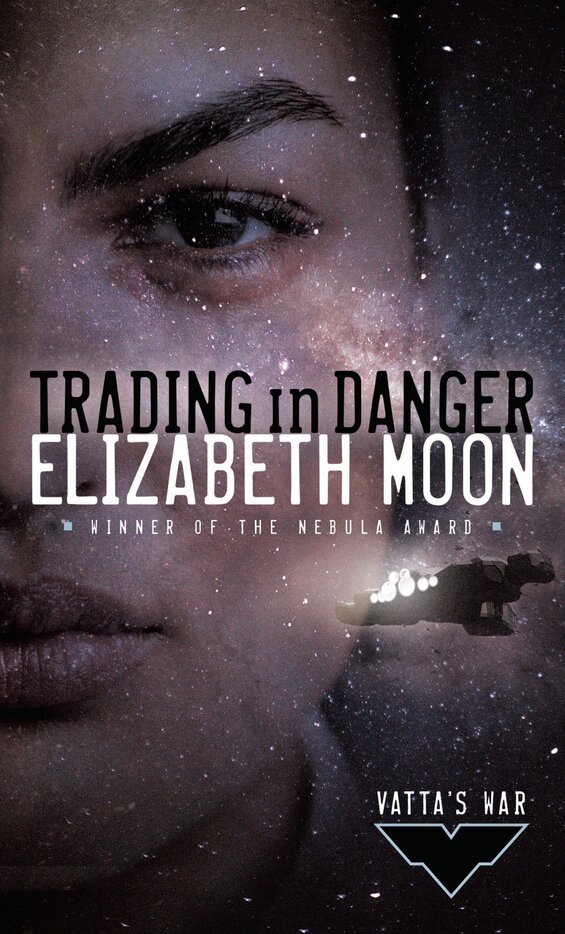
Trading in Danger (Vatta’s War #1) by Elizabeth Moon (2003) 314 pages ★★★★☆ – The launch of a promising military science fiction series
From 2003 to 2008, Elizabeth Moon published five books in the Vatta’s War series. The first two books in a new series, Vatta’s Peace, followed in 2017 and 2018. Trading in Danger, the first of these seven books, introduces Kylara Vatta, the nineteen-year-old scion of a wealthy family with an interstellar shipping empire. Like the other novels in its series, it’s categorized as military science fiction and is sometimes compared to Lois McMaster Bujold’s Vorkosigan Saga, which it resembles only slightly.
Kylara Vatta is in her final year at the military academy on her home planet of Slotter Key. She’s well on her way to a storied career in the navy when naively trusting a fellow cadet leads to her summary dismissal from the academy. At home, she discovers, her family is eager to hide her away from the media which is swarming about the scandal caused by that treacherous cadet. So, they name her captain of an old trading ship and send her off to lead it to a scrapyard many light-years away. To Kylara, the assignment is “the boring start to a dull, boring career as a truck driver in space.” But of course her journey on the Glennys Jones proves to be nothing of the sort. Read more . . .

When Christ and His Saints Slept by Sharon Kay Penman (1994) 770 pages ★★★★☆ — Cousin battles cousin in the first English civil war
One of the pivotal events in the evolution of Great Britain as we know it today occurred nearly 900 years ago during the era known as “The Anarchy.” From 1138 to 1153, what are today England and France experienced continuous turmoil, as two contenders battled for the throne in the first English civil war. (Historians point to the period from 1642 to 1651 as the English Civil War. However, it’s clear to me that in fact The Anarchy was more properly speaking the first English civil war.) The resulting conflict was devastating on both sides of the Channel. And its outcome set the course of Britain’s history for 300 years, inaugurating the reign of the Plantagenet Dynasty. English novelist Sharon Kay Penman illuminates this dark and consequential period in her sprawling historical epic, When Christ and His Saints Slept. Read more . . .
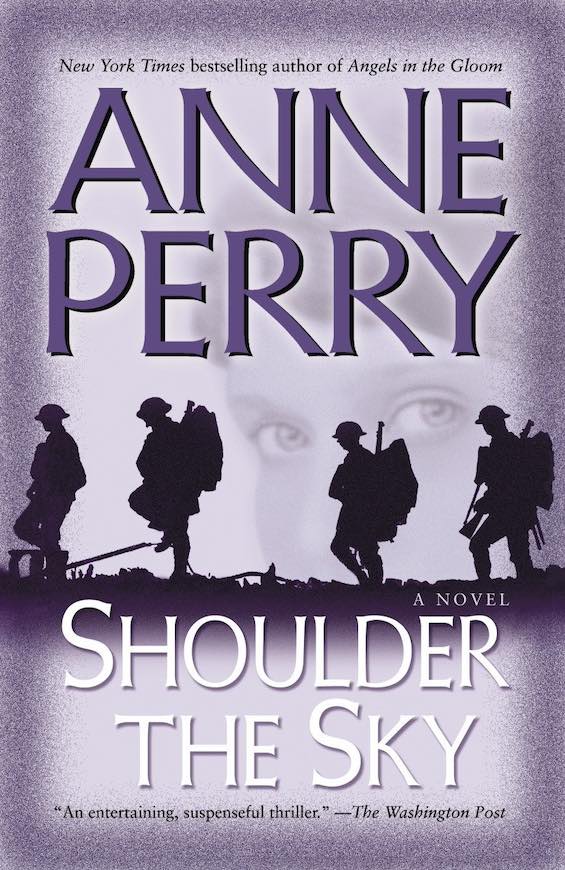
Shoulder the Sky by Anne Perry (2004) 312 pages ★★★★★—World War I, up close and personal
In Shoulder the Sky, the late British-American novelist deftly crosses the bounds of genre. The novel blends a story of espionage, a murder mystery, and a tale of unrequited love in a historical setting. Anchored in 1915 in Flanders, Gallipoli, and England, the book conveys the desperation of the British Establishment as they fought to stave off defeat in the face of a steadily shrinking army on the Western Front, ammunition rationing, German poison gas, devastating U-boat attacks, losses all over Africa to the Germans and Ottomans, and the strategic setback at Gallipoli in what is today Turkey. To some Britons, it was beginning to look as though a stiff upper lip wouldn’t carry the day. Read more . . .
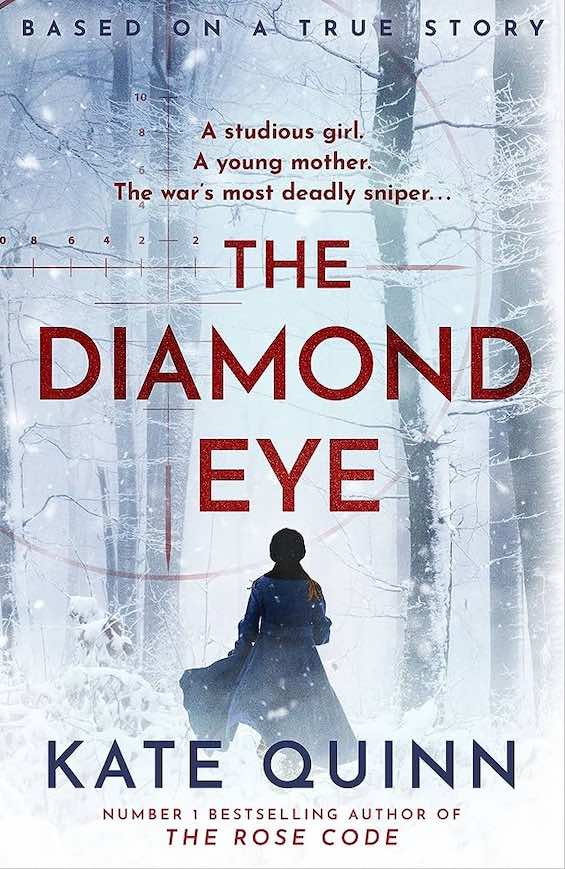
The Diamond Eye by Kate Quinn (2022) 448 pages ★★★★★—That famous Soviet female sniper in WWII
Yes, there was, indeed, a Soviet female sniper who gained fame in World War II. You may have come across mentions of her if you’ve read a lot about the war. She was Ukrainian, a fourth-year history student at Kiev University, and her name was Lyudmila Mikhailovich Pavlichenko (1916-74). She killed hundreds of Axis soldiers, a great many of them from long distances. And, like the woman of the same name in Kate Quinn’s novel The Diamond Eye, Pavlichenko was wounded after fighting for more than a year on the southern front. Following treatment for her injuries, she continued to serve the Red Army by training other snipers—and touring the US, Canada, and the UK late in 1942 to bolster support for the Soviet Union’s war effort. Read more . . .

The Persian Boy: A Novel of Alexander the Great by Mary Renault (1972) 432 pages ★★★★★—Up close and personal with Alexander the Great
History shows us that true military genius is rare. Some who are credited with it—George Washington, for example—clearly didn’t possess it. Even Napoleon, who blundered into the Russian winter and then compounded the error by overstaying in Moscow, fell short. Perhaps only a handful qualify. But among them, and at the top of most lists, is a young man who rose from the rugged mountains of the Balkans and conquered the greatest empire of his time. And Mary Renault’s novel of Alexander the Great shows him in all his glory, battling across the Middle East and Central Asia until his untimely death in 323 BCE. Read more . . .
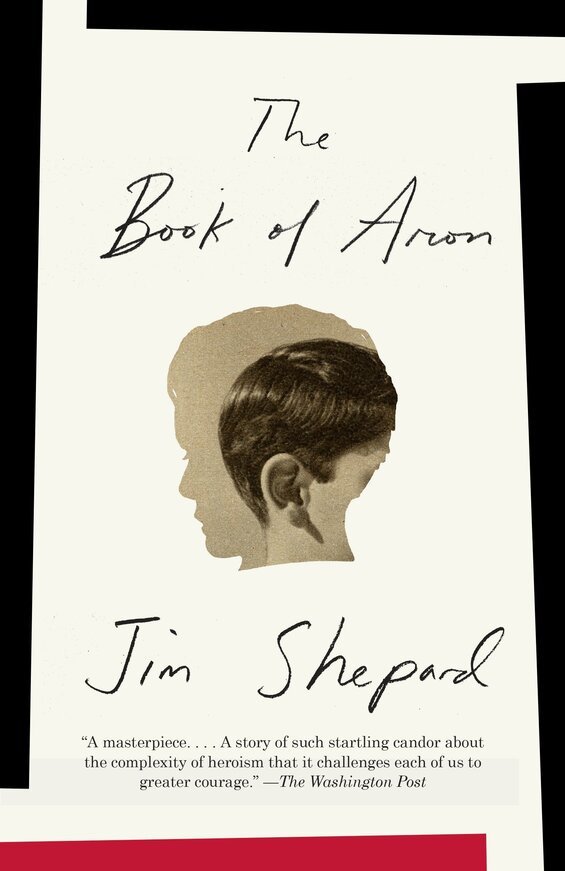
The Book of Aron by Jim Shephard (2015) 274 pages ★★★★★ – A brilliant novel of the Warsaw Ghetto
The annihilation of the Warsaw Ghetto was one of the signature events of the Second World War. Its story has been told innumerable times, in print, on film, and in oral histories. But, since I don’t go out of my way to seek out books about the Holocaust, I hadn’t yet come across a book that tells the tale from the perspective of a child. The Book of Aron,a novel by Jim Shepard, does that job brilliantly. It is a superb contribution to the extensive literature about World War II.
This is not one of those predictable tales of the heroic but doomed Warsaw Ghetto uprising. The action takes place in the months leading up to the uprising. The story revolves around the life of a boy named Aron, the son of a poor Jewish couple from a Polish shtetl near the Lithuanian border. Aron is eight years old when the tale begins in 1936, but the book focuses on the tragic months in 1942 when he is thirteen. As the Nazis progressively shrink the borders of the Ghetto and starve its residents, Aron and his gang of twelve- and thirteen-year-olds turn to petty crime in an effort to survive. They become adept in sneaking through gates or crawling through tunnels to the streets outside the Ghetto, smuggling food back in for themselves and their families. Read more . . .
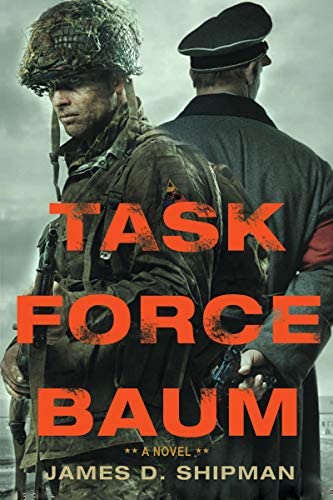
Task Force Baum by James D. Shipman (2019) 304 pages ★★★★☆—An ill-fated mission to rescue American POWs in WWII
Late in March 1945, six weeks before Nazi Germany’s unconditional surrender, then-Lieutenant-General George S. Patton set in motion a bold initiative to rescue several hundred American officers from a POW camp forty miles behind enemy lines in Germany. He ordered twenty-three-year-old Captain Abraham Baum to lead an armored column of 300 men and 50 vehicles, including 16 tanks, to liberate Oflag XIII-B near Hammelburg in Bavaria. Three of Patton’s staff officers present at the meeting, and Baum himself, protested that the force was far too small, but the general was adamant. And Task Force Baum set out on March 26, 1945. James D. Shipman’s novel about Task Force Baum is a highly fictionalized account of the action that ensued during the following three days.
In Shipman’s imaginative telling, the experiences of three fictional junior officers dominate the story. Two are American, one a German. Each fights his own desperate personal battle as the action unfolds.
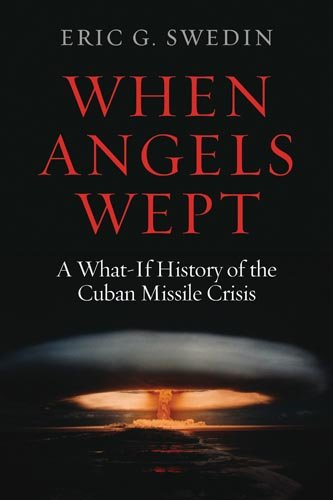
When Angels Wept: A What-If History of the Cuban Missile Crisis by Eric G. Swedin (2010) 316 pages ★★★★★—An alternate history of the Cuban Missile Crisis
When Angels Wept is one of the most remarkable works of alternate history I’ve ever come across. A professional historian wrote this award-winning “What-If History of the Cuban Missile Crisis,” and it shows. Author Eric Swedin builds his story soundly on the historical record, which he knows in great detail as an expert on the 1962 missile crisis. His premise: that the distrust and misunderstanding that nearly led the US and the USSR to launch a nuclear war in 1962 actually did so. In effect, the book becomes an alternate history of nuclear war.
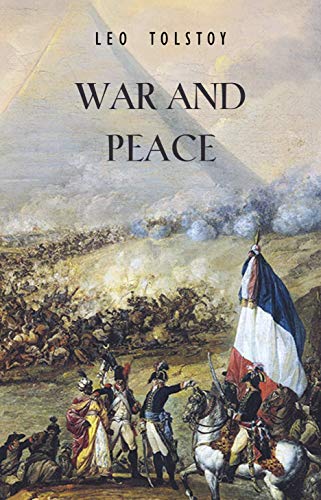
War and Peace by Leo Tolstoy (1869) 1,225 pages ★★★★☆—Was “War and Peace” the greatest novel ever written?
Leo Tolstoy’s War and Peace is sometimes called the greatest novel ever written. But I’m not sure why. For its time—the first edition appeared in 1869—it must have been remarkable for the stark realism of its depiction of soldiers at war. But War and Peace isn’t a novel in the truest sense, and it doesn’t wear well in the 21st century. It’s a curious mixture of narrative, historical commentary, and philosophy as well as action scenes and dialogue. The fictional passages are often brilliant—especially the battle scenes. By contrast, much of the rest is barely readable. Particularly in its concluding chapters, the text is wordy, repetitious, and tedious. Nowadays a thoughtful editor would likely cut back this 1,200-page doorstopper to four or five hundred pages.
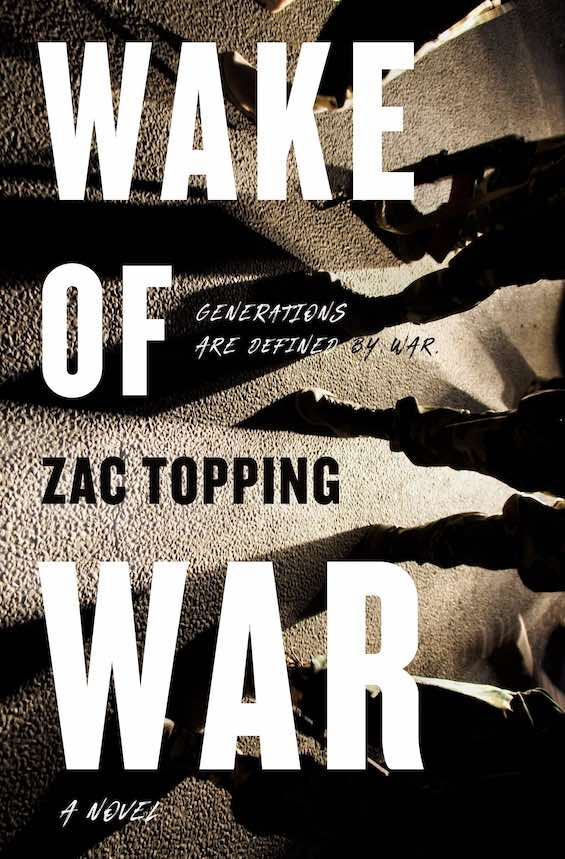
Wake of War by Zac Topping (2022) 232 pages ★★★★★—Is a second civil war in America’s future?
Dystopian novels range across a spectrum from realism to absurdity. No one could regard the most famous of the lot as realistic depictions of any recognizable future. Brave New World, 1984, and The Handmaid’s Tale are works of literature, taking poetic license to drive home the author’s vision. But later dystopian tales do sometimes fall on the realistic end of the spectrum. And Zac Topping’s Wake of War, a novel about a second American civil war, is a grim example. It portrays a set of events we could easily see in our future. If this is prophecy, it’s terrifying.
Wake of War is, unsurprisingly, a war novel. Prepare yourself for nearly nonstop action from beginning to end. I’ve never experienced combat, so I can’t attest to the accuracy of the fighting portrayed in this book. But author Zac Topping served two tours in Iraq, and I trust him to convey a more accurate sense of the experience than anyone who has never been in the military. However, Topping does not glorify combat. In fact, if it’s true that every war novel is an anti-war novel, Wake of War certainly qualifies. Read more . . .
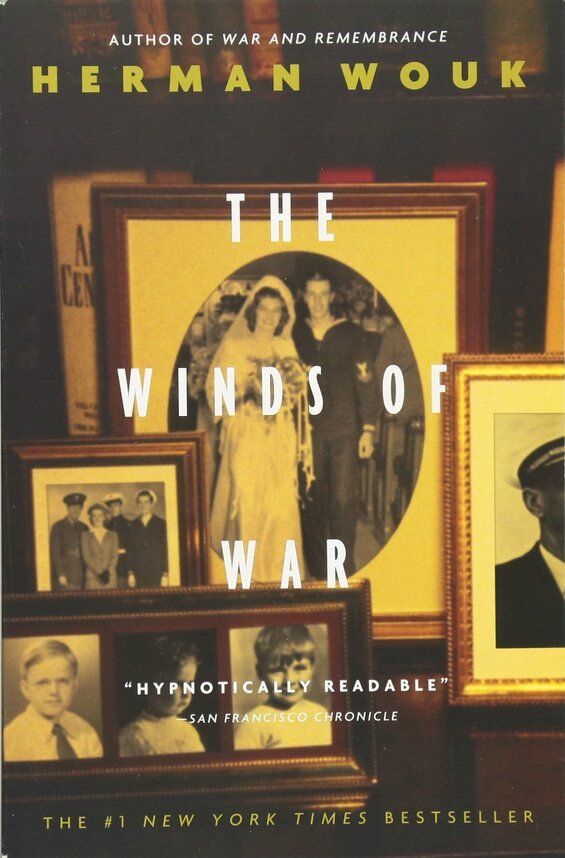
The Winds of War (World War II #1 of 2) by Herman Wouk (1971) 898 pages ★★★★★ – Is this classic World War II novel the best ever?
Imagine trying to tell the story of World War II through the lives of a single family. After all, the war engaged more than 100 million people from 30 countries in a conflict that raged for years on three continents. Yet half a century ago a remarkable author named Herman Wouk set out to do exactly that for American readers. In two volumes totaling 2,300 pages, Wouk follows US Navy Captain Victor Henry, his wife, his two sons, the women they marry, his young daughter, and a handful of other characters as they are tossed about by “the winds of war.” The 900-page story by that name encompasses the years 1939 through 1941. And it’s followed by another 1,400 pages in a companion volume spanning the remaining years of the war. These classic World War II novels remain a compelling read fifty years after their publication. Read more . . .
For related reading
You’ll find similar novels at Great military science fiction.
Although it doesn’t merit listing among the very best war novels like those above, it’s worth checking out Of Rice and Men by Richard Galli (A Vietnam War novel that’s at once both funny and poignant).
You might also be interested in:
- The 10 best novels about World War II
- 15 good books about the Holocaust
- Top 10 great popular novels
- The 10 top espionage novels
- 20 most enlightening historical novels
And you can always find my most popular reviews, and the most recent ones, on the Home Page.

